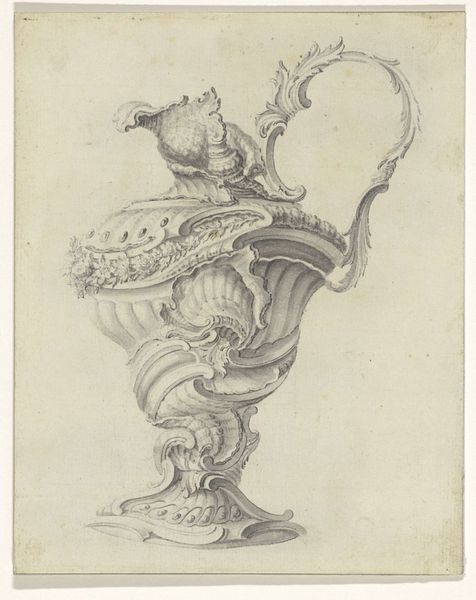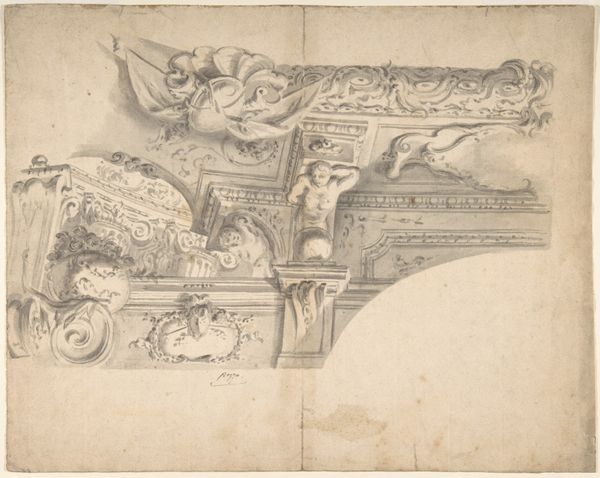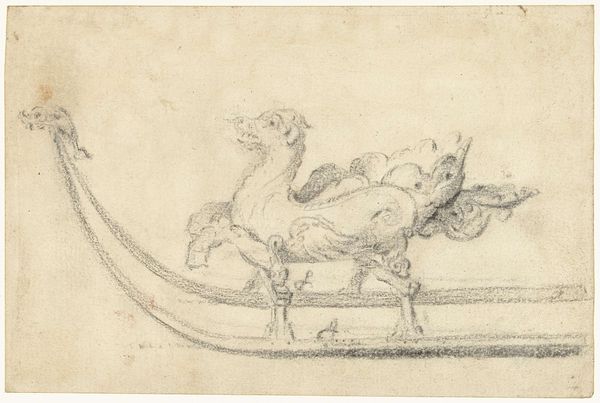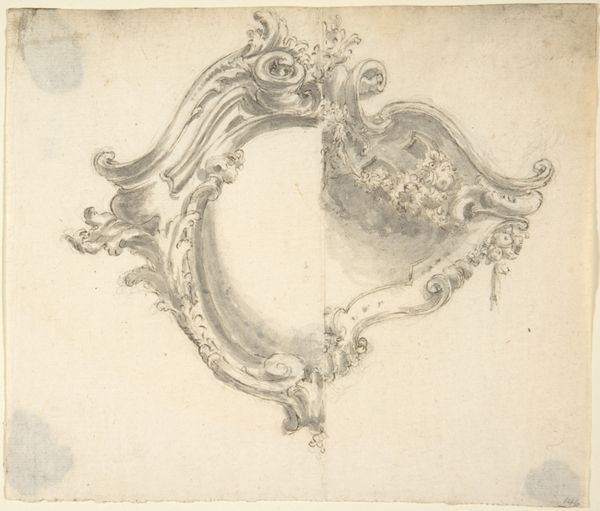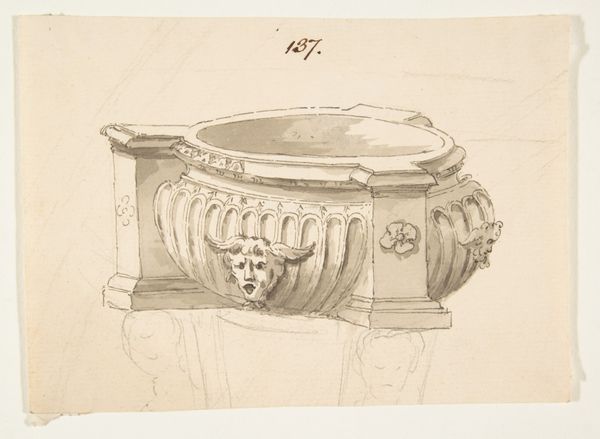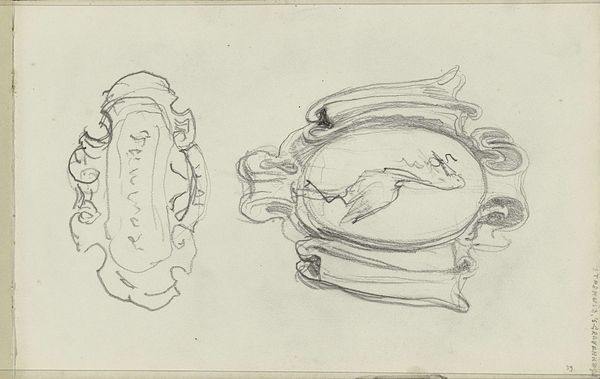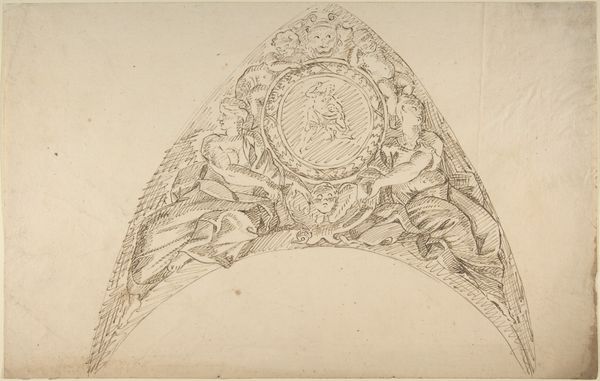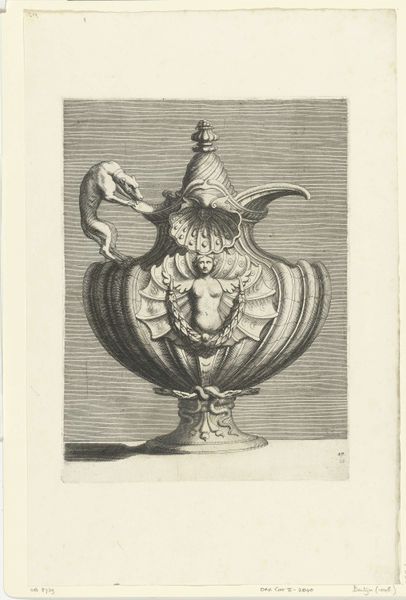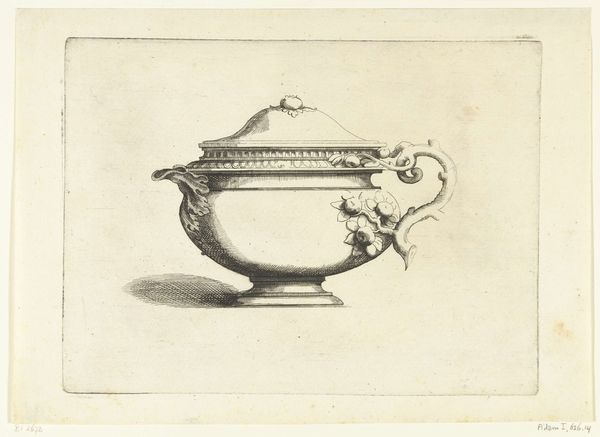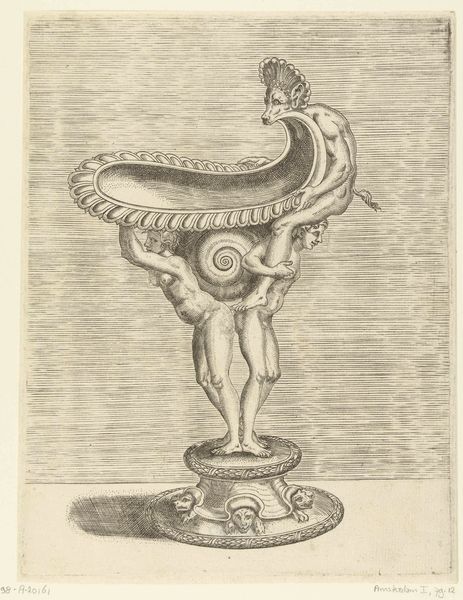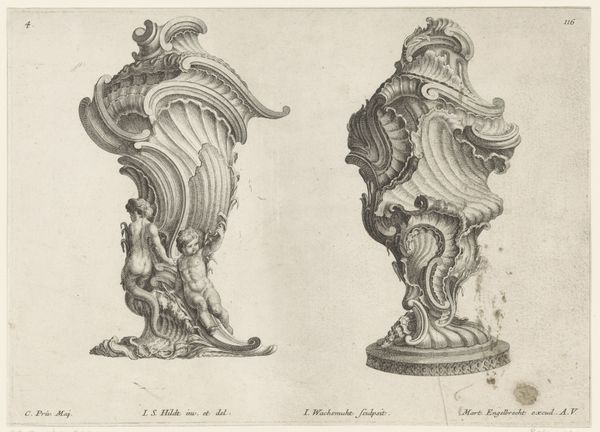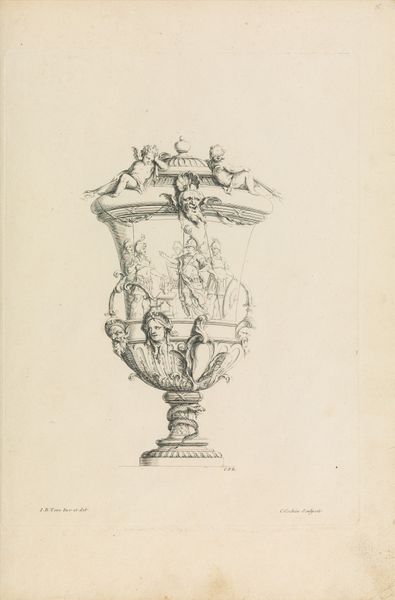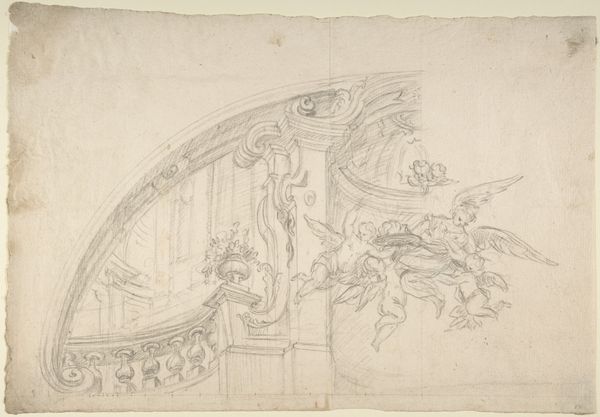
drawing, print, pencil
#
drawing
#
neoclacissism
# print
#
classical-realism
#
form
#
pencil
Dimensions: 3-3/8 x 4-7/8 in
Copyright: Public Domain
Curator: Here we have a preparatory sketch entitled "Architectural Drawings," created anonymously sometime between 1800 and 1900. It appears to be a drawing and print on paper rendered in pencil. Editor: Immediately, the ornamentation strikes me. It's neoclassical, certainly, but verging on the baroque with all those flourishes. Is it just me, or does the weight and intricacy belie the vessel's function? Curator: Functionality yields to form in neoclassicism, you know. Notice the precise linearity, the emphasis on symmetry. The artist employs a limited palette, achieving tonal variation to delineate depth and volume, reducing the subject to its most ideal manifestation. The very absence of vibrant color emphasizes the sculpture’s pure structure. Editor: But what about the labor required? Pencil, paper, printing – who made these things available? What are the class dynamics inherent in both its production and intended use? The precise lines may celebrate rational form, but the dragon-like figures suggest other values lurking. Curator: Your interest is duly noted, but might I add that those serpentine forms serve to offset the otherwise severe geometry. Observe how the curling appendages animate the composition, providing counterpoint to the basin’s stoic mass. This push-pull creates tension. Editor: Yes, but the material reality pushes, too! Drawings like this, existing only as blueprints, hold such conceptual tension. Whose labor would've translated this vision into reality? Consider the materiality: was it destined to be marble, bronze, or some other signifier of wealth and status? Curator: Such considerations may be valuable, but risk eclipsing the intentional composition – a balance of opposing elements united by the artistic vision of the draftsman. Ultimately, the appeal of "Architectural Drawings" rests within the equilibrium. Editor: Still, the social life of objects and of sketches – the means of creation – informs our very reading. Curator: Fair enough, it is clear the piece elicits multiple perspectives, but hopefully we have helped illuminate both the structural intent and social context.
Comments
No comments
Be the first to comment and join the conversation on the ultimate creative platform.
